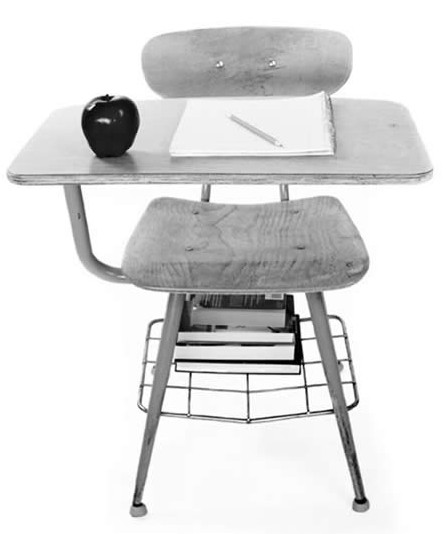History
You are here: Census.gov › History › Reference › Classroom Resources › Lesson Plans
Classroom Resources
Lesson Plans

High School Lesson Plans
For both the 2000 and 2010 censuses, the U.S. Census Bureau, in cooperation with Scholastic, Inc., created census-related lesson plans for teachers of students in Kindergarten through 12th grade. The 2010 Census lesson plans are available on the Census in Schools website.
In addition to the lesson plans developed by the Census Bureau, other organizations have developed teaching aids that use census data to teach subjects like math, geography, and history. Links to some of these lessons can be found below.
Human Migration: The Story of the Cultural Landscape
This lesson will help students understand key concepts of human migration through the examination of maps and census data. They will then research and document the impact of migration on a region's cultural landscape. Students will examine migration patterns on a global and national scale as a class, and then apply that understanding to a migration story about their own community.
Was There an Industrial Revolution? New Workplace, New Technology, New ConsumersIn the decades before the Civil War, a significant number of inventions and innovations appeared, transforming American life. Also of great consequence was the development of the American system of manufactures. This system, in which individual workers were responsible for only part of a finished product, helped make store-bought goods more affordable. As a result, people began to buy goods from stores rather than making them-the American consumer was born.
Impressive achievements to be sure, but revolution means dramatic, rapid change. Are the changes that took place in manufacturing and distribution during this period best described as a "revolution" or as steady change over time? What research tools can help students judge the nature of change during the First Industrial Revolution? Can answers be found in census data? This lesson provides students with the opportunity to form, revise, and research questions for an investigation of the First Industrial Revolution, using resources available on EDSITEment-reviewed Web sites and links.
African Americans: 1800-1870
This assignment uses a specific area of history-life of African Americans 1800-1870-to teach students not just the factual content of this era in history, but also how to conduct research using a variety of sources including special reference works, primary documents, and interviews with experts. The students will be guided by teachers to use area resources as well as national resources to learn about the living and working environment of both slave and free African Americans from places throughout the United States.
The Human Toll of the Civil War
This lesson uses primary sources and comparative statistics to help students understand the effects of the Civil War on the U.S. population.
Puerto Rican Women's Labor Movement
Official documents, census data, newspaper articles, and photographs from this time period in Puerto Rico's history shed light on the complicated roles women have played in Puerto Rican society. American companies and government officials recognized that working women were necessary for increased industrialization. Women's participation in these new industries provided the opportunity for them to become household breadwinners and participate in the labor movement alongside men. This participation in industry and in the labor movement, however, brought a slew of government regulations about women's health, primarily birth control and forced sterilization, often based on eugenic assumptions about the racial inferiority of Puerto Rican women.
The Kanaka Village at Fort Vancouver: Crossroads of the Columbia River
Students learn about the interaction between Native American and European cultures in the Pacific Northwest in the 1800s.
The Growth of Cities in the 19th Century
The purpose of this lesson is to introduce students to how and why the cities of the United States grew during the 19th century.
Middles School Lesson Plans
The First Census: America in 1790
During the Constitutional Convention of 1787, the Founding Fathers were forced to compromise on two major issues concerning how to determine representation in the new nation. Students will understand why there was tension between states with large and small populations and how slavery played a roll in the Constitutional Convention.
George Washington and the First Census of Agriculture
Students will read excerpts from a letter George Washington wrote about agriculture in the United Sates in 1771 and compare his evaluation with agricultural data over time.
Measuring the Growth of Slavery: 1790-1860
Researching for numerical data and then displaying that data in a logical way are important social studies skills. The purpose of this lesson is to allow students to develop these necessary skills, while getting a picture of the newly independent nation. This was our nation's first attempt to ascertain just who we were. Looking at data from the 1790 through 1860 censuses will allow students to see the increasing issue of slavery in our nation's life.
Cities (Grades 6-8)
(Grades 6-8)
Students will learn that the U.S. Census Bureau counts the population of the United States in a formal way once every 10 years. Students will look at a 50-year span of census figures to see trends within a city and across cities, and compare populations in cities across a period of time using graphs.
Elementary Lesson Plans
Census: The Constitutional Count (Grades 3-5)This lesson will acquaint students with Article 1, Section 2 of the Constitution, which calls for an enumeration of the population every ten years. Students will explore the reasons for the census and participate in a variety of activities designed to involve them in the census process. This lesson will be multidisciplinary involving math, art, language arts, and social studies skills.
Native Americans Today
Many people believe that Native Americans are a vanished peoples; that they do not exist in the present day.
Using this lesson plan, teachers can use photo essays and other texts to introduce students to Native children and their families, thereby countering the idea that Native Americans no longer exist.
A Land Between Rivers: The Land Has Shaped Us, And We Have Shaped The Land . . .
This lesson plan tells the story of central California between the San Joaquin and Kings Rivers, and the critical role the area played in determining the destiny of California and the American West.


 Facebook
Facebook Twitter
Twitter Flickr
Flickr YouTube
YouTube